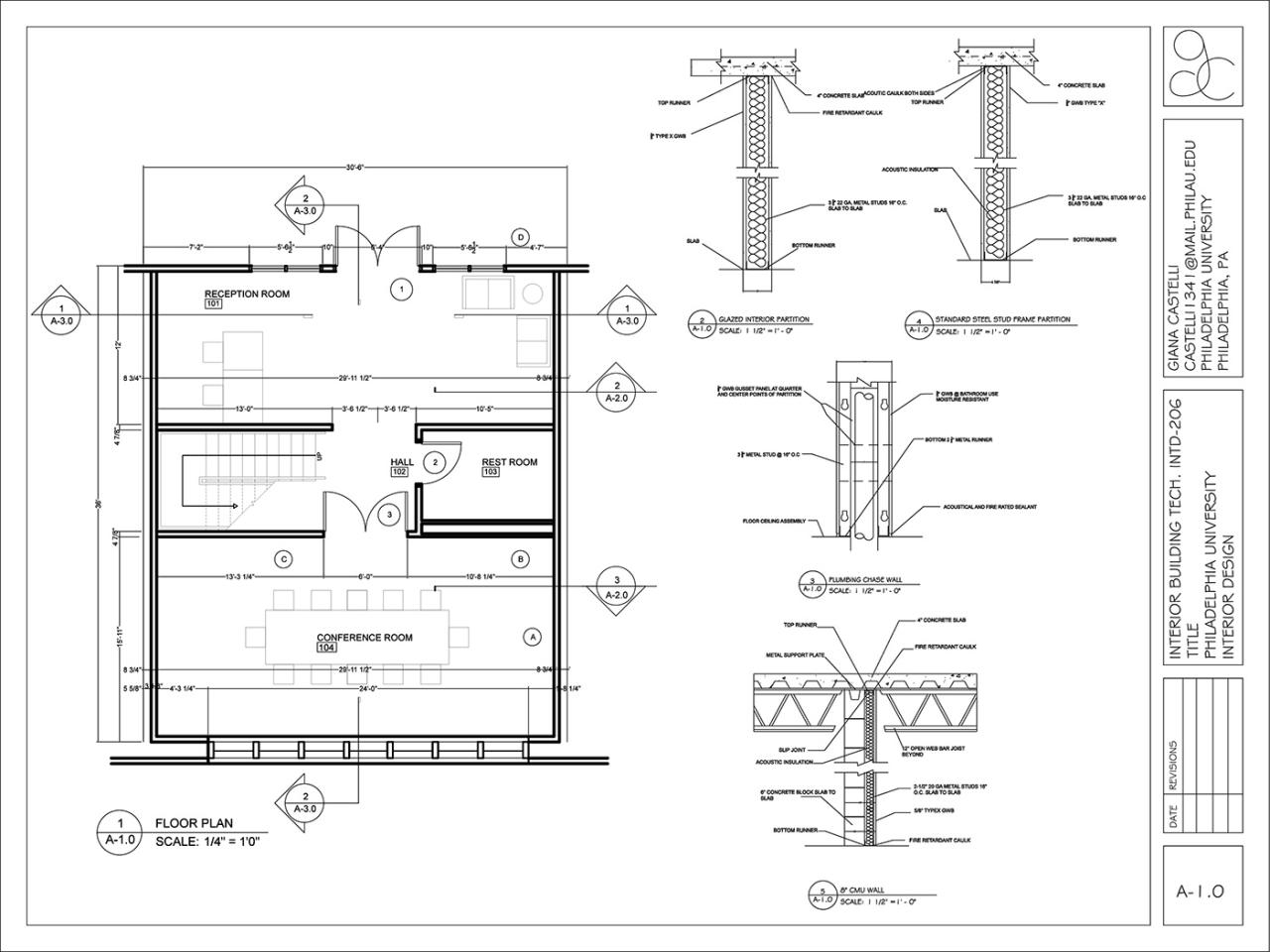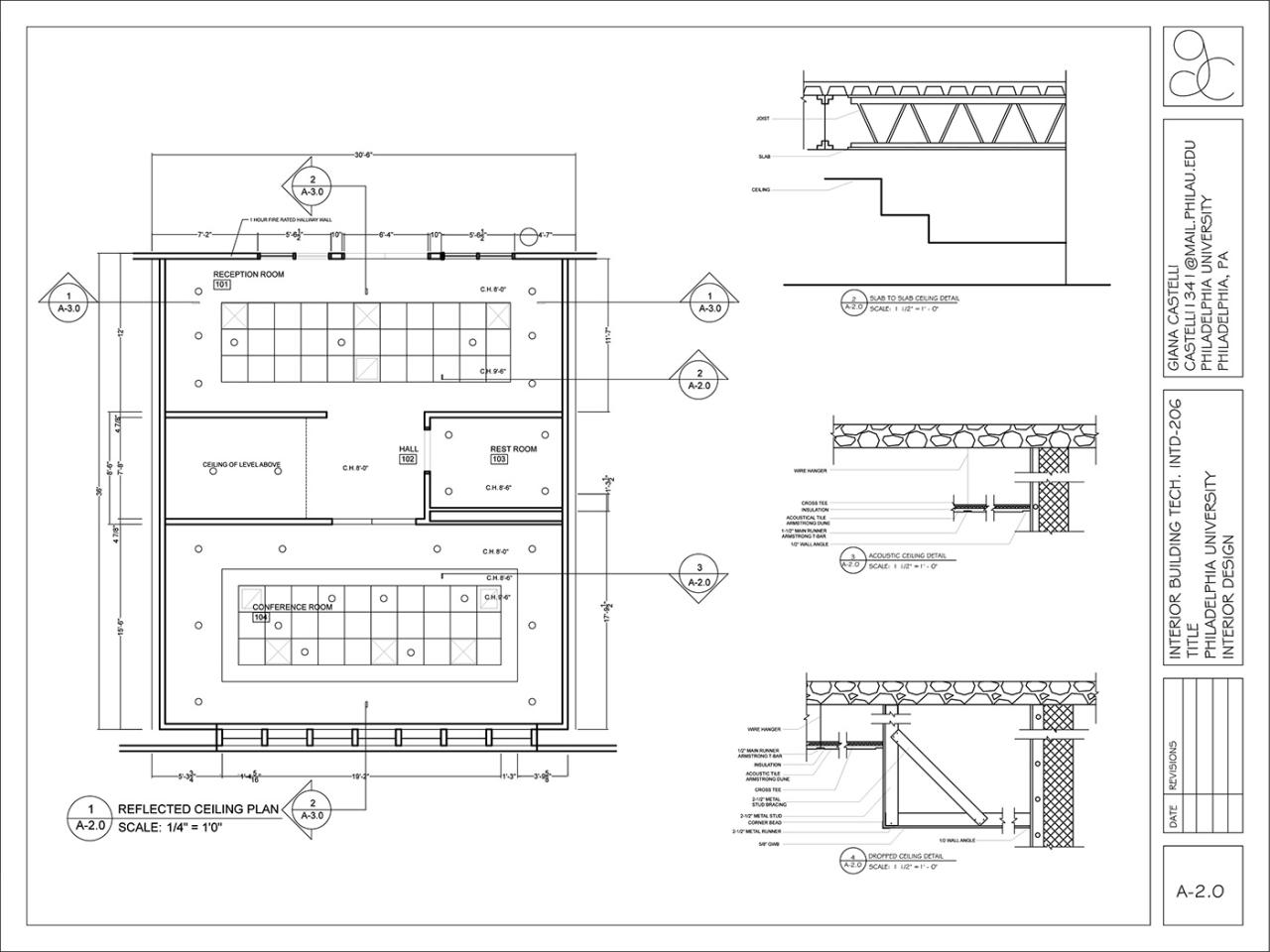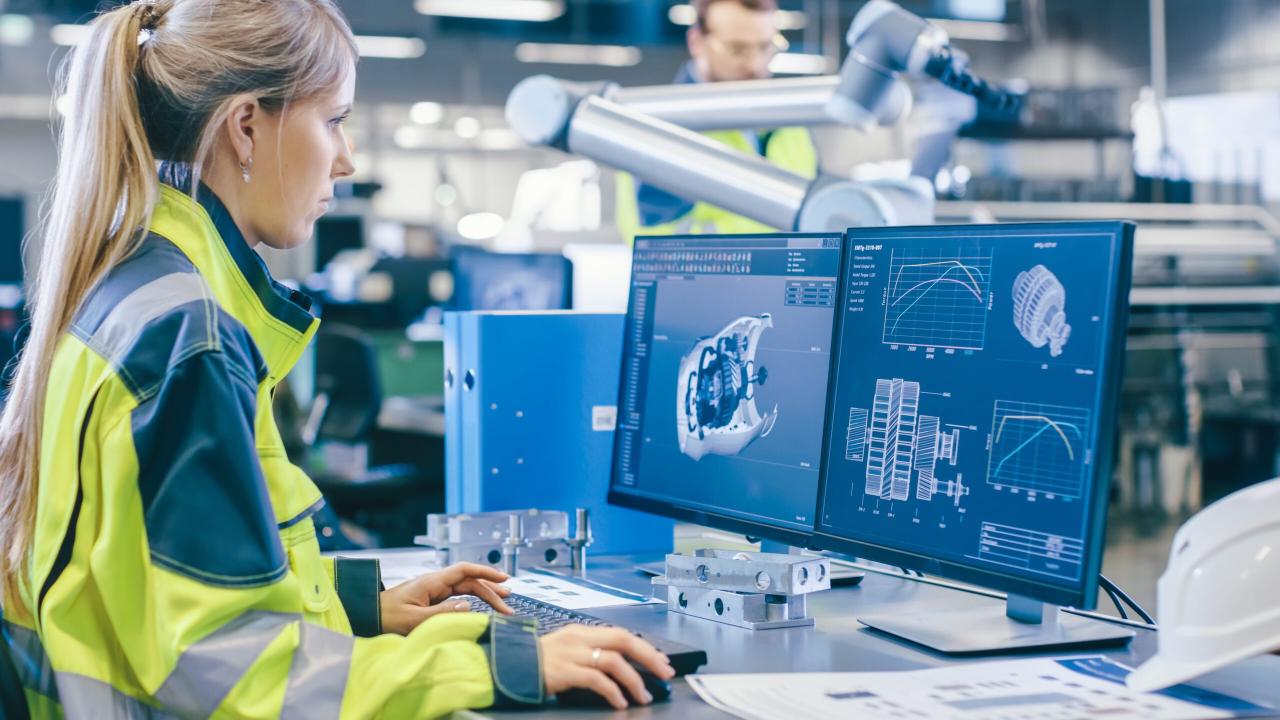Construction Documents Technology: A Modern Revolution
Construction documents technology has revolutionized the way we design, build, and manage structures. From traditional hand-drawn blueprints to sophisticated digital platforms, the evolution of construction documents has significantly impacted the […]

Construction documents technology has revolutionized the way we design, build, and manage structures. From traditional hand-drawn blueprints to sophisticated digital platforms, the evolution of construction documents has significantly impacted the industry, enhancing accuracy, efficiency, and collaboration.
This article delves into the key technologies driving this transformation, exploring the benefits, challenges, and future trends shaping the landscape of construction documentation. We will examine the role of Building Information Modeling (BIM), discuss various software applications, and explore the impact of cloud-based platforms.
Evolution of Construction Documents Technology

Construction documents, the blueprints and specifications that guide the construction process, have undergone a remarkable evolution, transitioning from traditional hand-drawn methods to sophisticated digital platforms. This evolution has significantly impacted the efficiency, accuracy, and collaboration involved in building projects.
Traditional Construction Documents
Traditional construction documents relied heavily on manual drafting techniques. Architects and engineers painstakingly created drawings using pencils, pens, and drafting tools on large sheets of paper. These drawings were then reproduced using methods like blueprinting or photocopying, which involved specialized equipment and processes.
- Advantages: Traditional methods allowed for a high level of artistic control and detail, enabling architects to express their vision with precision. The tangible nature of paper-based drawings facilitated easy annotations and revisions, fostering a collaborative environment among project stakeholders.
- Disadvantages: Traditional methods were time-consuming, prone to errors, and difficult to manage. Revisions required redrawing entire sections, leading to delays and inconsistencies. Reproducing and distributing drawings was a laborious process, limiting accessibility and hindering collaboration.
Digital Construction Documents
The advent of computers and software revolutionized construction documentation. Computer-aided design (CAD) software emerged as a powerful tool for creating and manipulating digital drawings. This technology enabled architects and engineers to create detailed and accurate drawings with greater efficiency and precision.
- Advantages: Digital documents significantly reduce the time and effort required for drafting, revision, and reproduction. The ability to easily share and access drawings online enhances collaboration and communication among project teams. Digital platforms also facilitate data management, allowing for seamless tracking of revisions and ensuring consistency throughout the project lifecycle.
- Disadvantages: Digital documents require specialized software and hardware, which can be costly. The reliance on technology can create vulnerabilities, such as data loss or software compatibility issues. The lack of physical drawings can make it challenging for some stakeholders to fully grasp the project’s scope and details.
Key Innovations and Technologies
Several key innovations and technologies have played a pivotal role in the evolution of construction documents:
- Computer-Aided Design (CAD): This software revolutionized the creation and manipulation of digital drawings, significantly enhancing accuracy, efficiency, and collaboration.
- Building Information Modeling (BIM): BIM goes beyond 2D drawings, creating intelligent 3D models that integrate data about the building’s components, materials, and systems. This technology facilitates comprehensive project planning, cost estimation, and clash detection.
- Cloud-Based Platforms: Cloud-based platforms enable seamless sharing, collaboration, and access to construction documents from anywhere, anytime. This technology facilitates real-time collaboration and enhances project efficiency.
- Virtual Reality (VR) and Augmented Reality (AR): VR and AR technologies provide immersive experiences, allowing stakeholders to visualize and interact with building designs in a virtual environment. This technology enhances communication and facilitates informed decision-making.
Key Technologies in Construction Documents: Construction Documents Technology
The construction industry has undergone a digital transformation, with technology playing a pivotal role in streamlining workflows, improving efficiency, and enhancing collaboration. Key technologies are transforming the way construction documents are created, managed, and shared.
Building Information Modeling (BIM)
BIM is a digital representation of physical and functional characteristics of a facility. It is a powerful tool for creating and managing construction documents, enabling a collaborative and data-driven approach to design, construction, and operation.
BIM software creates a comprehensive digital model of a building, incorporating architectural, structural, mechanical, electrical, and plumbing (MEP) systems. This integrated model provides a single source of truth for all project stakeholders, ensuring consistency and accuracy across all phases of the project lifecycle.
BIM facilitates:
- Improved Design Coordination: BIM allows designers to identify and resolve conflicts early in the design phase, reducing costly rework and delays during construction.
- Enhanced Visualization and Communication: BIM models provide realistic 3D visualizations, enabling stakeholders to understand the project design and make informed decisions.
- Cost Estimation and Scheduling: BIM models can be used to generate accurate cost estimates and create realistic construction schedules.
- Construction Management and Operations: BIM data can be used to manage construction progress, track materials, and optimize workflows.
- Facility Management: BIM models provide valuable information for maintaining and operating buildings throughout their lifecycle.
Software Applications
A variety of software applications are used for creating and managing construction documents.
Computer-Aided Design (CAD)
CAD software is widely used for creating 2D drawings and plans, including floor plans, elevations, sections, and details. CAD software offers tools for drawing, editing, and annotating drawings, and it allows for the creation of complex geometries and shapes. Popular CAD software includes AutoCAD, Revit, and MicroStation.
3D Modeling Software
3D modeling software is used to create three-dimensional representations of buildings and structures. These models can be used for visualization, design analysis, and construction planning. 3D modeling software allows for the creation of realistic models with detailed textures, materials, and lighting. Popular 3D modeling software includes SketchUp, 3ds Max, and Rhino.
Visualization Tools
Visualization tools are used to create interactive 3D models that can be viewed and manipulated in real-time. These tools allow stakeholders to experience the design from different perspectives, enhancing their understanding of the project. Popular visualization tools include Lumion, Enscape, and V-Ray.
Cloud-Based Platforms
Cloud-based platforms have revolutionized the way construction documents are shared and collaborated on.
Collaboration and Sharing
Cloud-based platforms allow project teams to access and share construction documents from anywhere with an internet connection. This eliminates the need for physical storage and facilitates seamless collaboration among stakeholders.
Benefits of Cloud-Based Platforms
- Real-time Collaboration: Multiple users can work on the same documents simultaneously, making it easier to track changes and ensure everyone is working from the latest version.
- Improved Communication: Cloud-based platforms provide built-in communication tools, such as chat, email, and video conferencing, facilitating efficient communication among project teams.
- Enhanced Security: Cloud-based platforms offer robust security features, protecting construction documents from unauthorized access and data breaches.
- Cost Savings: Cloud-based platforms eliminate the need for expensive hardware and software licenses, reducing IT costs.
Examples of popular cloud-based platforms for construction documents include Autodesk BIM 360, Procore, and PlanGrid.
Benefits of Using Construction Documents Technology
Construction documents technology offers a multitude of benefits, revolutionizing the way construction projects are planned, executed, and managed. By leveraging advanced software and tools, construction professionals can streamline processes, enhance collaboration, and ultimately achieve better project outcomes.
Improved Accuracy and Efficiency
Technology significantly enhances the accuracy and efficiency of construction projects. Here’s how:
- Automated Design and Drafting: Computer-aided design (CAD) software allows architects and engineers to create precise drawings and models, reducing the risk of errors and ensuring consistency throughout the project. This automation also speeds up the design process, allowing for quicker iterations and revisions.
- Accurate Quantity Takeoffs: Construction documents technology provides tools for accurate quantity takeoffs, which are crucial for estimating material requirements and costs. Software can automatically calculate quantities based on drawings and specifications, minimizing manual calculations and potential errors.
- Streamlined Documentation Management: Centralized platforms for managing construction documents, such as Building Information Modeling (BIM) software, enable efficient organization, storage, and access to project data. This reduces the risk of miscommunication and ensures all stakeholders have access to the most up-to-date information.
Enhanced Communication and Collaboration
Construction projects involve numerous stakeholders, including architects, engineers, contractors, and subcontractors. Technology plays a vital role in fostering effective communication and collaboration among these parties:
- Real-time Collaboration: Cloud-based platforms allow teams to work on construction documents simultaneously, regardless of their location. This facilitates real-time collaboration, enabling instant feedback and revisions, and reducing the time required for project coordination.
- Improved Communication Channels: Construction documents technology offers various communication channels, such as instant messaging, video conferencing, and project management software. These tools enhance communication flow, enabling quick issue resolution and ensuring everyone is on the same page.
- Centralized Information Hub: Construction documents technology provides a centralized hub for all project information, including drawings, specifications, schedules, and communication logs. This ensures that all stakeholders have access to the latest updates and reduces the risk of miscommunication or missed information.
Cost Savings and Risk Reduction
By leveraging technology, construction projects can achieve significant cost savings and mitigate risks:
- Reduced Material Waste: Accurate quantity takeoffs and material management tools minimize material waste, leading to cost savings and improved sustainability.
- Minimized Errors and Rework: Technology-aided design and construction processes reduce the incidence of errors and rework, saving time and money.
- Improved Project Scheduling and Planning: Construction documents technology enables efficient project scheduling and planning, allowing for better resource allocation and reducing delays. This minimizes project costs and ensures timely completion.
- Enhanced Safety and Risk Management: Technology can be used to identify and manage potential safety risks during construction. BIM software, for instance, can simulate construction scenarios and identify potential hazards, allowing for proactive mitigation strategies.
Challenges and Future Trends

While construction documents technology offers numerous advantages, its implementation and integration present several challenges. The impact of emerging technologies like AI and VR on construction documentation is significant, shaping the future of this field.
Challenges in Implementing Construction Documents Technology
The successful implementation of construction documents technology involves overcoming various challenges. These challenges are related to the technology itself, its integration into existing workflows, and the need for skilled personnel to manage and utilize the technology effectively.
- Cost of Implementation: The initial investment in software, hardware, and training can be substantial, especially for smaller firms.
- Integration with Existing Systems: Integrating new technology with existing software and workflows can be complex and time-consuming.
- Data Security and Privacy: Protecting sensitive data, such as project plans and client information, is crucial, especially with cloud-based platforms.
- Training and Adoption: Ensuring that all stakeholders, including architects, engineers, contractors, and clients, are adequately trained and comfortable using the new technology is essential.
- Standardization and Interoperability: Lack of industry-wide standards and interoperability between different software platforms can create compatibility issues.
Impact of AI and VR on Construction Documentation
AI and VR are transforming construction documentation by enhancing efficiency, accuracy, and collaboration.
- AI-powered Design Optimization: AI algorithms can analyze vast amounts of data, including historical project data and building codes, to suggest optimal design solutions, reducing errors and improving efficiency.
- VR for Immersive Visualization: VR technology allows stakeholders to experience 3D models of construction projects, providing a more intuitive understanding of the design and identifying potential issues before construction begins.
- Automated Documentation Generation: AI can automate the creation of construction documents, such as drawings and specifications, from 3D models, saving time and reducing the risk of errors.
Future of Construction Documents Technology
The future of construction documents technology is bright, with advancements in AI, VR, and other technologies poised to revolutionize the industry.
- Increased Automation: AI will play an increasingly important role in automating repetitive tasks, such as data entry and document generation, freeing up professionals to focus on more strategic tasks.
- Integration with Building Information Modeling (BIM): Construction documents technology will be seamlessly integrated with BIM, enabling real-time data sharing and collaboration among all project stakeholders.
- Advanced Visualization and Simulation: VR and augmented reality (AR) will provide even more immersive and interactive experiences, allowing stakeholders to visualize and simulate complex construction projects in detail.
- Data Analytics and Predictive Maintenance: Data analytics will be used to predict potential problems, optimize project schedules, and improve asset management, leading to greater efficiency and cost savings.
Epilogue
As construction documents technology continues to evolve, it promises to further streamline processes, improve project outcomes, and enhance sustainability. By embracing innovation and leveraging the power of digital tools, the construction industry can unlock new levels of efficiency, accuracy, and collaboration, ensuring the delivery of successful and sustainable projects for generations to come.
Construction documents technology has evolved significantly, with digital platforms streamlining processes and enhancing collaboration. One such innovation is the use of altern technology , which allows for real-time updates and seamless communication between all stakeholders. This integration of technology in construction documents not only improves efficiency but also minimizes errors and delays, ultimately contributing to successful project delivery.










